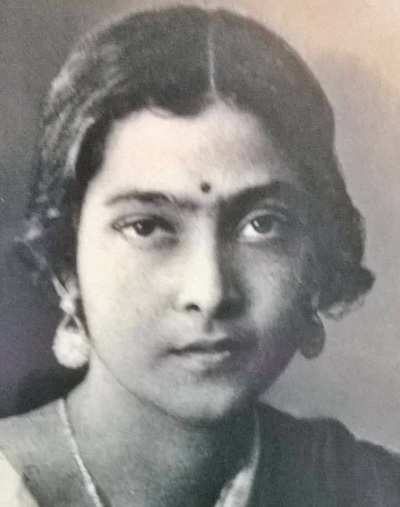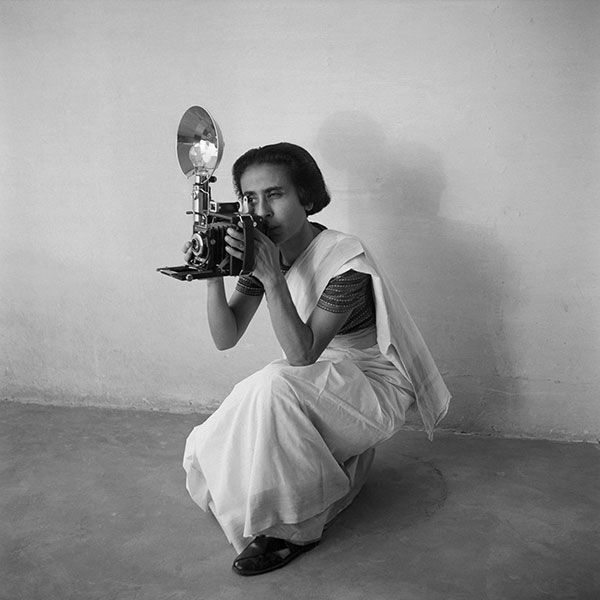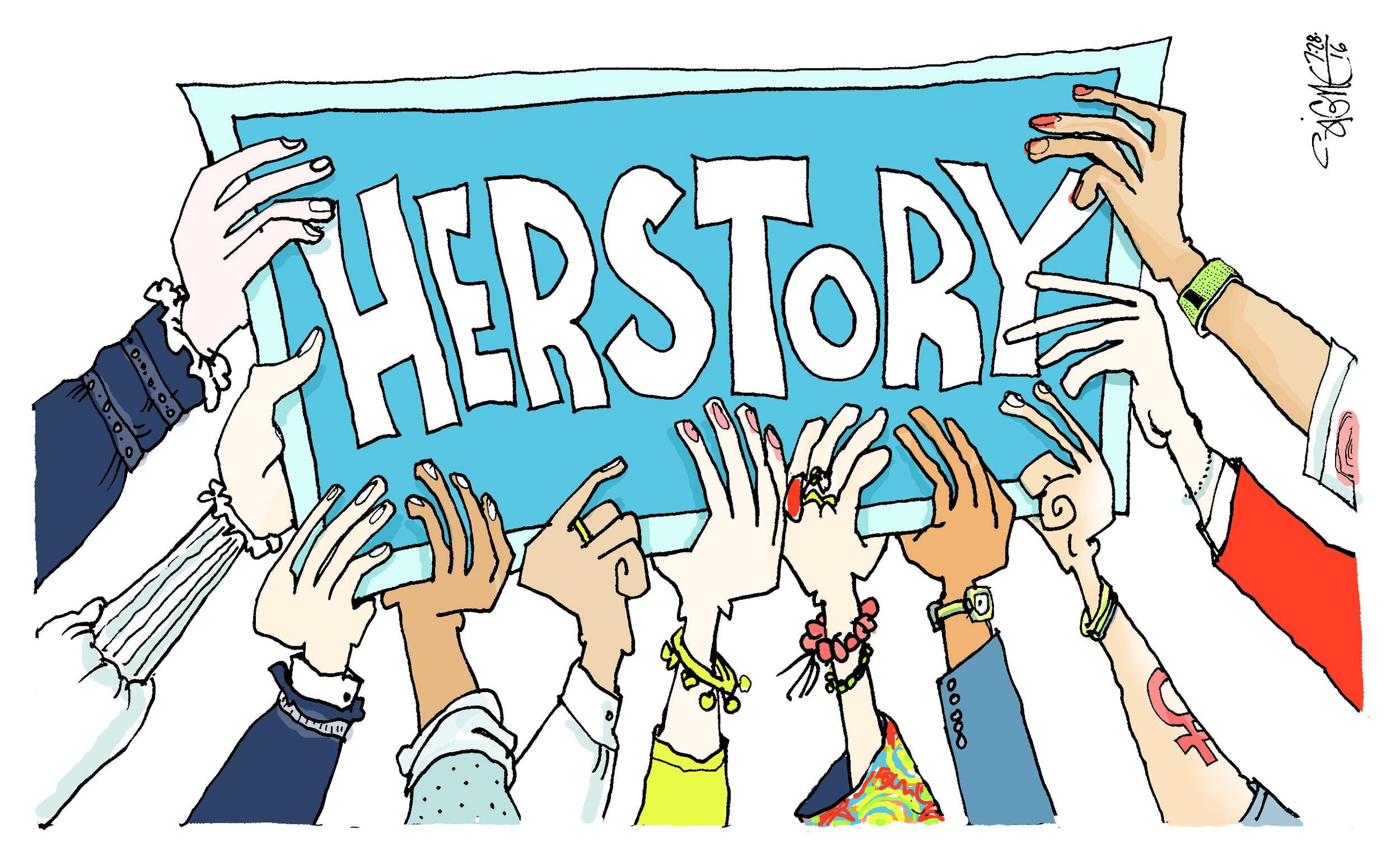The term Herstory was first coined in the course of the feminist movement in the U.S. A in the 1970s. A play on the term History, which refers to the study of past events, herstory refers to history or historical narratives viewed from the feminist perspective. This history re-written from the point of view of women emphasises on their experiences and work that have been omitted from the male dominated documentation of our past.
During the second wave of the feminist movement, many were frustrated with the male narratives that controlled and presided the course of the chronicling of historical events. The historical amnesia around women’s stories necessitated the coinage of the term “herstory”. Herstory was used seriously as well as ironically. American poet, author, political theorist and activist Robin Morgan is considered to be one of the firsts to use the term herstory in print, in Sisterhood is Powerful: An Anthology of Writings from the Women’s Liberation Movement which she edited and was published in 1970.
At a time when many young women and queer people are deprived of their rights and freedom to live according to their own will, herstories become highly significant. The retelling of history from the perspective of the historically marginalised, give them a sense of belonging and situates them in the larger scope of the society. It empowers young women and queer people to claim the place that the male-dominated documentation of history denies them

The herstory movement led to the formation of many publications that focused on giving exposure to women writers. Virago Press is one such publishing house. In 1973, Australian publisher, writer and critic Carmen Callil founded the Virago Press which primarily focused on publishing the writings of women authors. It mostly published original works by upcoming women writers and forgotten works of neglected female authors of the past. Later, the press also published novels with feminist themes which were written by male authors like H.G. Wells.
Around 2016, herstory campaigns on online platforms became very popular on a global scale. Feminist organisations throughout the world began reconstructing historical narratives by including the forsaken stories of women and queer people. The Herstory Campaign initiated by the joint collaboration of Global G.L.O.W and LitWorld, is one of such campaigns. The aim of these campaigns is to create role models that will empower future generations of women and queer people.
Also read: Women In The Streets: Walking Through History, Literature And Activism
At a time when many young women and queer people are deprived of their rights and freedom to live according to their own will, herstories become highly significant. The retelling of history from the perspective of the historically marginalised, give them a sense of belonging and situates them in the larger scope of the society. It empowers young women and queer people to claim the place that the male-dominated documentation of history denies them.
But the term herstory has been criticised by many. It is sometimes deemed unacceptable with claims that history doesn’t necessarily mean his+story. The term is also criticised as artificial and is considered a hindrance in the path of progress. This criticism doesn’t necessarily eliminate the need for relocating feminine narratives in the vast expanse of history. Looking at history from a feminist perspective is needed to archive the lost stories of forgotten women of the past. It grounds the feminist movement and helps to accentuate sidelined experiences in mainstream narratives.
5 remarkable herstories of India:
Bina Das
In the history of the Indian struggle for independence, women find very scattered recognition. But on revisiting history, we find freedom fighters like Bina Das who risked their lives for the country. In 1932, she attempted to assassinate Stanley Jackson, the then Governor of Bengal. After her failed attempt, 21 year old Bina Das was sentenced to nine years of imprisonment. But even after her release, she did not dampen her spirit, and fought diligently for the country.

Amrit Kaur
Amrit Kaur was the first woman cabinet minister of India. She gave up her comfortable, privileged life and became a part of the Quit India Movement in 1942. She was a champion of women’s education and fought for women’s welfare. She was the founder of AIIMS, India’s leading medical institution. She was also the first woman and first Asian to ever head the governing body of the World Health Organisation (WHO).

Homai Vyarawalla
The first female photo-journalist of India, Homai Vyarawalla is often excluded from the history she once documented. She photographed the first flag hoisting of a free India. She was behind many significant photographs of the Nehruvian era.

Pramila
In the history of Indian cinema, the first of the Anglo-Indian women who were cast are often forgotten. Esther Victoria Abraham, a school teacher in Calcutta went on to become the famous actress Pramila after being discovered by Rama Shankar Choudhury. She went on to act in films like Ulti Ganga in 1942. She was also the first to be crowned Miss India in 1947.

Toru Dutt
Born in 1856, Toru Dutt is a literary phenomenon. She revolutionised Indian writing in English and was the first Indian writer in French. Her most famous works include A Sheaf Gleaned in French Fields, Ancient Ballads and Legends of Hindustan, Le Journal de Mademoiselle d’Arvers. Her works explore themes of patriotism, longing, love and nostalgia. Her unfinished novel Bianca or The Young Spanish Maiden is presumed to be the first Indian novel in English written by a woman. Dutt passed away at the age of 21 and most of her works were posthumously published by her father.

Also read: Bina Das: The Brave Freedom Fighter Who Died In Anonymity | #IndianWomenInHistory
Featured Image Source: Signe Wilkinson
About the author(s)
Udhriti Sarkar is a post-graduate student at Calcutta University. When she is not obsessing over fictional characters, she observes people and writes about them




